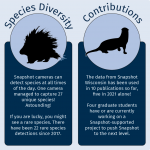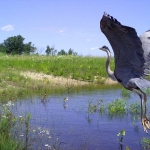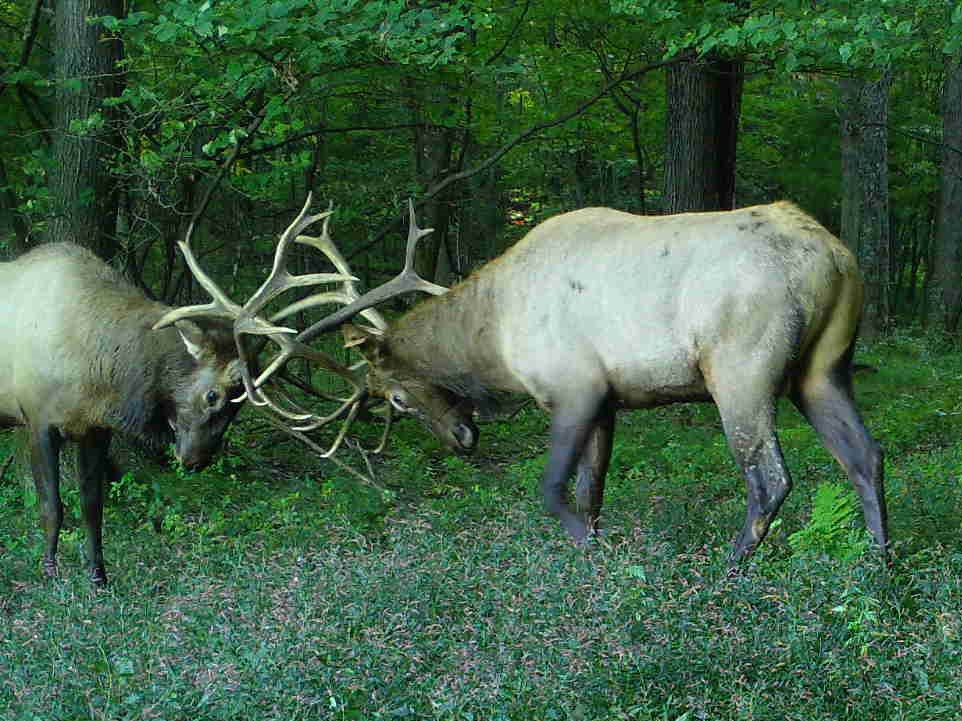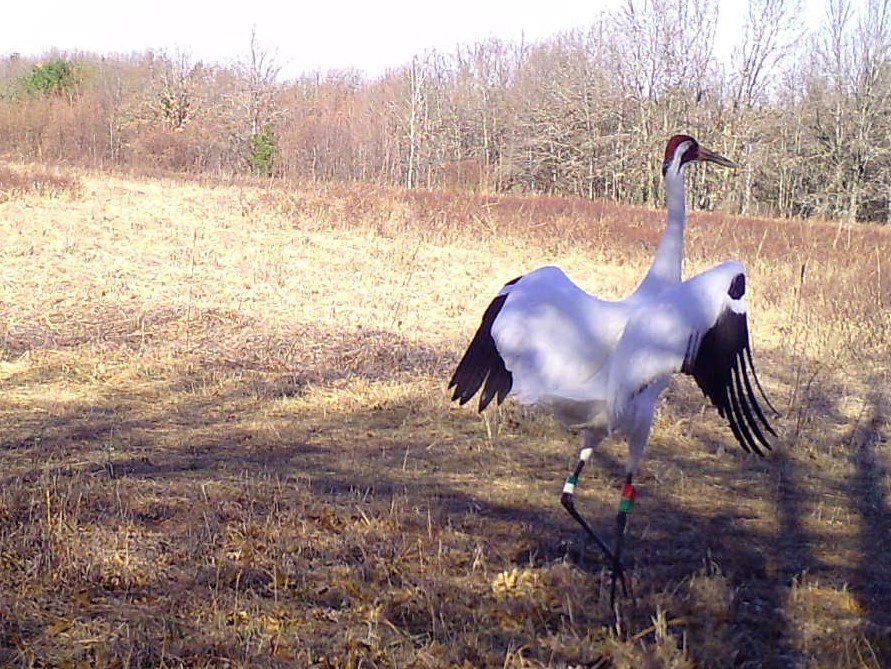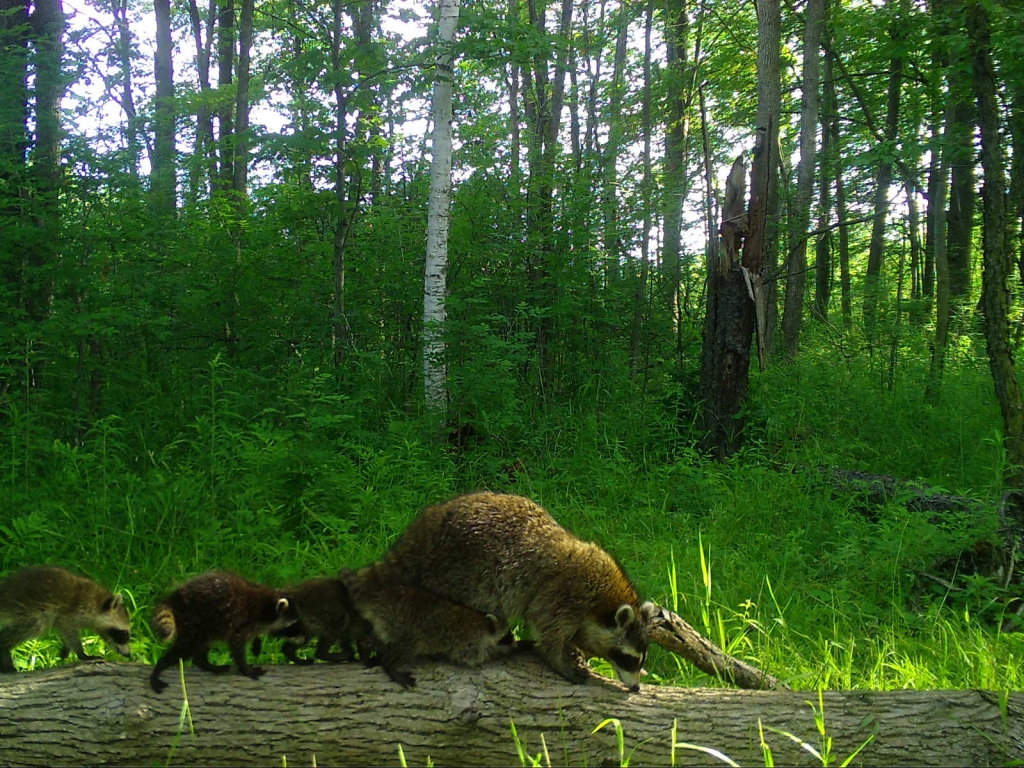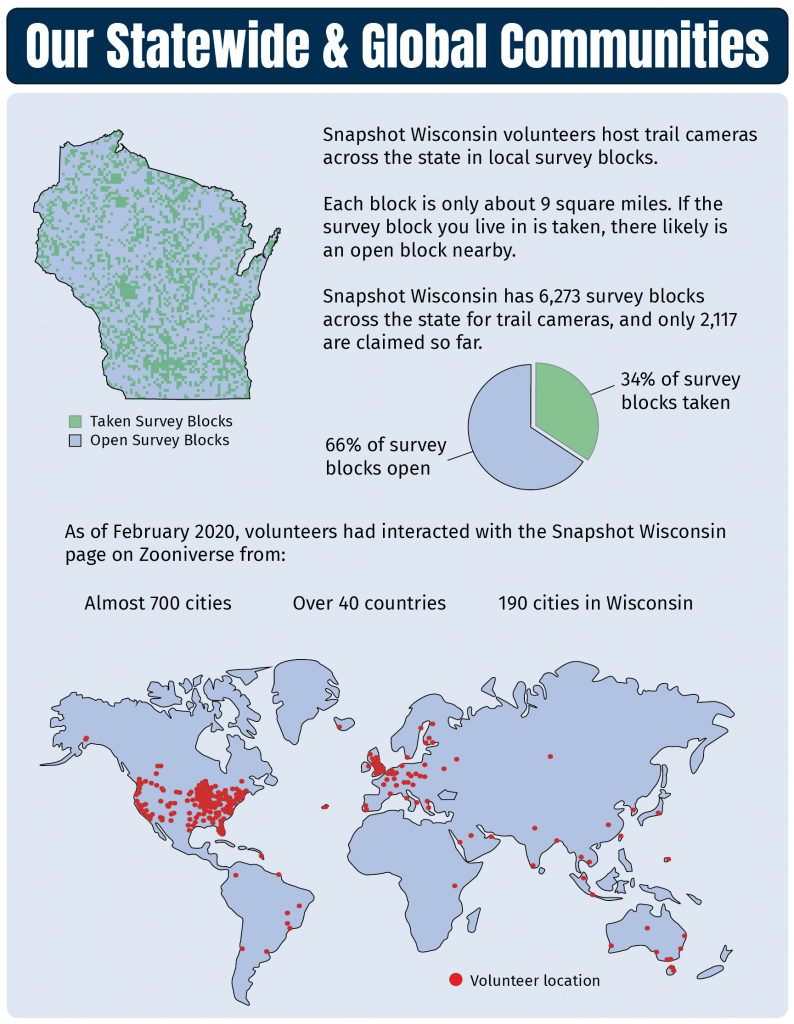Snapshot Wisconsin September 2021
This edition of the newsletter is a bit different. With the craziness of the past year and a half, the Snapshot team wanted to make a special kind of “snapshot” that commemorates where we’ve come as a program and a volunteer base. To do this, the team is building a time capsule that will serve as a snapshot of the program as it stands today.
We’ve been considering what information to include in the capsule, and we believe one of the best ways to celebrate the program’s success is to tell the story of Snapshot, from its origins up until today. Many of the major milestones are mentioned and serve as a great way for volunteers to learn more about Snapshot’s past.
The team also wanted to be able to compare the Snapshot of today with the Snapshot of the future (when the time capsule is opened). The team put together two infographics that capture several dimensions of the project and includes interesting statistics about Snapshot. Lastly, the Snapshot team invites you to be a part of the time capsule. We want you to send in short stories about your experiences as Snapshot Wisconsin volunteers. The team will look through the submissions and select a few to add to the time capsule. After all, our volunteers make this whole project possible, so we cannot imagine building a time capsule without including content from our volunteers.
Check out all of the articles below!
From Testing Cameras In Her Backyard To A Statewide Monitoring Program
Learn about the history of Snapshot Wisconsin through the lens of one of the original Snapshot team members, Jennifer Stenglein.
The Snapshot team explains two new infographics that show where the program is at today. Don't miss them!
We Want You To Be Involved In The Time Capsule
Snapshot is volunteer-supported, so the team wants you to be involved in the time capsule project. Read about how you can get involved.
From Testing Cameras In Her Backyard To A Statewide Monitoring Program
Jen Stenglein, Quantitative Research Scientist at the Wisconsin DNR and one of the longest-serving Snapshot staff members, walks us through the early years of the program and how Snapshot Wisconsin expanded into the massive project that it is today.
If you are a newer Snapshot volunteer, then here is your chance to learn more about the program’s early history. For those who lived much of the history firsthand (especially the early adopters), this article might be a trip down memory lane. Either way, we hope you get something from this recounting of the past and connect more strongly with the program.
A Grant And A Collaboration
Snapshot Wisconsin’s origin stems from a NASA grant that the University of Wisconsin-Madison received in 2013. The grant aimed to lay the groundwork for a citizen science program for monitoring wildlife that would be launched by the Wisconsin Department of Natural Resources (DNR). Soon after, the DNR created Snapshot Wisconsin and started what would become a massive project.
Stenglein got involved while the project was still in the planning phase. “I was finishing my PhD at the time in Madison, WI and heard about the project. Thanks to my connection with the university, I already knew many of the major players involved,” said Stenglein. “Some of the initial project planning happened before I came in, so the project was basically waiting for someone to figure out the logistics.”
What cameras should volunteers use? How should the cameras be set up to capture the best photos? How would they get equipment to volunteers and train them? There were many questions and fewer answers.
2014: Figuring Out The Logistics
In 2014, Stenglein began to answer these questions by running tests in her backyard. “I had a whole line of cameras set up in my backyard, each a different model. We also had cameras out behind the DNR building [to test a second location]. There were so many questions we needed to answer,” recalled Stenglein.
At the time, the Snapshot team was comprised of only two people: Stenglein and Christine Anhalt-Depies, the current project coordinator for Snapshot Wisconsin. Stenglein was working on the program full-time, while Anhalt-Depies was devoting half her time to support Snapshot Wisconsin. Piece by piece, they ran tests and figured out what cameras and setup the first volunteers would use.
Stenglein recalled figuring out other logistics too like where the cameras would go. “I remember looking at a map of Wisconsin and making the decision to divide townships into quarters. That would be our grid setup,” said Stenglein. “Those grid blocks were about the right size [roughly nine square miles] for what we wanted and left space for over 6,000 cameras around the state. That sounded like a doable maximum.”
By the end of the year, Stenglein and Anhalt-Depies had finished enough of the equipment testing to put their plan to the test, starting with Wisconsin’s elk herd.
2015: The First True Test
Elk at the time were just being reintroduced in Wisconsin. There was one small, existing elk population (reintroduced from Michigan), but that population hadn’t taken off how people hoped. A second effort was being set up to bring Kentucky elk to Wisconsin, and those elk were coming in just as Snapshot became ready to test out their program.
“We thought it would be a really great opportunity to test Snapshot Wisconsin on a known population. All of the elk were radio-collared, [so we knew how many were being added to the area.] It was a perfect test to see how well our equipment and methods would hold up,” said Stenglein.
But of course, things didn’t go perfectly as planned. One near miss stood out to Stenglein and captured some of the hecticness of getting the program up and running.
“We almost didn’t have the cameras in time,” explained Stenglein. The camera delivery came in late on the same day that we were scheduled to set up the cameras. “We already had folks waiting in the field, and I had to plead with the delivery driver [to prioritize delivering our cameras].” There were some near misses like that, but Stenglein said they worked through them all in the end.
By the end of the year, a few hundred cameras had been deployed across the elk zones, and the program was officially running. Volunteers now ran the cameras, and images were starting to stream in.
2016: Expanding The Program
Once the team felt they were in a solid routine, they started thinking about expanding Snapshot to more of the state. “It was nice to have the elk grid up and running already, because we knew how the logistics would function,” said Stenglein.
The Snapshot team focused on recruiting educators, even seeking out a couple grants to build collaborations with different educator groups. “Educators seemed like a good place to start, because they affect so many people in their daily life,” said Stenglein. “They could help us reach more people faster.”
To start, the team mainly accepted volunteers from only two Wisconsin counties: Sawyer and Iowa Counties. “We heard from lots of people [around the state] who were excitedly awaiting enrollment, but we wanted to roll things out slowly [to work out any new kinks in the process]. For example, we didn’t want to have a bunch of people getting equipment, only to be frustrated by the IT system not working properly yet,” said Stenglein.
Stenglein and the team were enrolling volunteers at a steady pace, but volunteers had to attend an in-person training session before they received their equipment. Since the team was still only three to four people, there were a limited number of trainings offered. That bottleneck kept the expansion to a manageable pace.
The project was going well though. By the end of 2016, Snapshot had expanded to nine counties (adding Iron, Jackson, Manitowoc, Waupaca, Dodge, Racine and Vernon Counties). The IT infrastructure was working proprerly, supporting the in-flow of data. All of the planning that Stenglein and the team did was starting to pay off.
The team even launched their first first season of photos on Zooniverse, the crowd-sourcing platform. “Zooniverse was just an itty-bitty platform back then,” joked Stenglein, “but it helped us process photos much faster than we could have without it.”
2017: Growth and Rare Species Detections
Just as 2016 saw a growth to nine counties accepting volunteers, 2017 saw a similar growth. By the end of the year, one quarter of the state’s counties, or 18 in total, were accepting volunteers. St. Croix, Oneida, Marinette, Clark, Dane, Grant, Marathon, Rusk and Taylor counties were all added to the list in 2017. Additionally, over 1,000 volunteers had joined the program by this point, and the program was accepting volunteers even faster than before.
Coverage of the state was starting to fill in enough to be useful from a data perspective. For example, the Snapshot program saw its first rare species detection in 2017. It was a moose from Price County. “I remember it was really exciting because we were waiting for a rare species,” said Stenglein. The team quickly saw more rare species detections in rapid succession too, including a marten and whooping crane. “That whooping crane was extra exciting because we could ID the individual [from the colored bands on its legs] and learn more about it,” added Stenglein.
2018: Gearing Up For A Statewide Launch
Up until early-2018, the Snapshot team was adding counties to spread out coverage across the state. However, by March 2018, there were 26 counties involved. “At that point, adding counties was getting arbitrary,” said Stenglein. “Most areas of the state had at least one county involved already.” It was time to start accepting volunteers from all 72 counties: a true statewide launch.
Many improvements to the team and infrastructure had smoothed out most of the kinks in the system. The team had grown in size, and that additional capacity helped speed up onboarding of new volunteers. A new version of the cameras was also being used, which took fewer blank photos, and training had moved online to cut down on staff travel times. Everything was giving a green light for launch.
On August 9th, Snapshot Wisconsin officially launched startwide. Stenglein said the statewide launch was when it felt like Snapshot truly hit its stride. “I really felt like that point in time was pivotal for the project.”
Immediately after the statewide launch, the size of the program exploded. The team was able to accept much of the backlog of volunteers that had previously been unable to join the program. In 2018 alone, over 1,200 volunteers and 1,174 new trail cameras were added to the project, almost doubling Snapshot’s size.
2019: More Staff and A Slew Of Publications
To compensate for the doubling of the volunteer base, four new Snapshot positions were added to the team, and Anhalt-Depies took over as the project coordinator. The added support was very timely because the program continued to expand as more and more volunteers joined.
Additionally, enough data had come in by this point that the team (especially Stenglein) could start publishing their findings.
The program had already been generating data for the management of certain species, including generating fawn-to-doe ratios for deer and population estimates for each elk herd. However, until 2019, the project hadn’t published any peer-reviewed publications.
In a flurry, five scholarly publications were released in 2019 by the Snapshot Wisconsin team or one of the graduate students working with the program. Five publications in a single year is substantial, but it meant something extra to the Snapshot team.
“It was great to [finally] show the work we’d done on the data side of Snapshot,” said Stenglein. “In some ways, it took longer than we expected, because we thought that we’d have stuff to share right away. However, Snapshot’s value is the accumulation of data and the time series we’ve built up over the years, so it was appropriate that it took some time to get to the first publication.”
2020: An Important Year For Snapshot
2020 was a weird but important year for Snapshot. According to Stenglein, the team didn’t slow down much in 2020. In fact, many important milestones happened this year. The first of which was a huge boom of activity on Zooniverse.
People suddenly had more free time than usual, and many people used that time to classify photos on Zooniverse. Snapshot Wisconsin’s page saw substantially more users (and specifically new users) than normal. No surprise that photos were being classifyied faster as well. In fact, the team even had to adjust staff responsibilities to make sure there were photos on the platform. What a great problem to have, right?
Another exciting change during 2020 was the release of the Snapshot Wisconsin Data Dashboard, an interactive tool that lets the public play with Snapshot data. Anyone could explore the data of 19 Wisconsin species and see where (and when) each species was detected.
Stenglein said that releasing a product like the Data Dashboard had been the plan from the beginning, but the team didn’t originally know what form it would take. “Open data has been an important goal of the project, especially because of our collaboration with NASA and the University of Wisconsin.” It just took time to figure out what form the product would take and to make sure the data were accurate enough.
Most of our volunteers will know that Snapshot Wisconsin also reached a total of 50 million photos near the end of 2020. That is an impressive amount of data to receive and process. According to Stenglein, this milestone meant that Snapshot was finally a “big project.”
“It meant that we had the data that we wanted, and everything was working. There was a big sense of accomplishment, and for me, it meant that all that planning had paid off,” said Stenglein.
The fact that so many milestones happened in 2020 speaks to the sustained efforts of our volunteer base. Stenglein said, “The volunteers totally rallied and continued to bring the data in. That kept the project going. The fact that volunteers kept checking their cameras and classifying photos was big for us. Thank you.”
Reflecting On The Past
As the end of 2021 inches closer, the team reflected on where they’ve come as a program since Stenglein’s backyard experiments in 2014. They remember the near-miss with the elk cameras and the statewide launch in 2018. They remember the first rare species detection and the release of the first public-facing data visualization product, the Data Dashboard.
It has taken a lot of work to get to this point, both from our staff and our volunteers. The team wants to thanks its volunteers for their contributions over the years, whether you just joined or have been with us since the beginning. Every classification matters, just as all of our volunteers matter to us. Thank you for seven years of excitement and support!
2021: Where Are We Now?
In addition to the recounting of Snapshot’s history, the Snapshot team wanted to capture where we’ve come in these first seven years of the program. The team pulled together some statistics about the program and created two small infographics for everyone to enjoy.
When the time capsule is opened (in another five to seven years), it will be exciting to compare these statistics to those of the future. It will be fun to see how the program has evolved.
The first infographic is broken into six sections, each with its own theme. Each section captures a different aspect of the program, from our trail camera hosts to the diversity of species seen on the cameras.
Three of these statistics stood out to the team as worth discussing more. The first is how many educators (581, or 18% of all volunteers) have been a Snapshot Wisconsin volunteer. Think about the percentage of the general public that are educators. It is much smaller than 18% of the population. The team has made a concerted effort over the years to connect with educators and get them involved, and we are glad it shows in our volunteer demographics. The team cares about getting the public involved in our state’s natural resources, especially through education.
The second statistic that stood out to the team is the number of trail cameras that have been deployed across the state. Over 4,300 trail cameras have been issued to volunteers over the years, and 2,117 (51%) of them are still active on the landscape.
Some may be confused as to why the number of total cameras (4,350) is higher than the number of total volunteers (3,312). Some of our volunteers host multiple cameras, so we expect the number of cameras to be higher. Also, trail cameras don’t last forever. Bears, for example, like to swat at cameras and damage them. The oldest cameras also die from outliving their lifespan. Sometimes, cameras just malfunction. When a camera isn’t working properly, the volunteer returns it to the team and gets a different one. All of these reasons add to the number of total cameras that have been deployed.
Just over 50% of the total cameras are currently deployed on the landscape. The team is excited to have so many cameras out there. It is like having 2,100 people watching for wildlife day and night. That is powerful from a data perspective.
The last statistic that the team wanted to expand upon is related to species diversity. A single camera managed to capture images of 27 unique species classifications. Snapshot has 45 distinct classifications that a photo can receive, and only 41 have ever been used. To see 27 unique species on a single camera is incredible, because the home ranges of at least 27 species must overlap at the exact location of this camera for this to happen. Over 65% of all detected species have lived in a single area. Incredible biodiversity!
The second infographic focuses on the locations of our trail cameras and Zooniverse volunteers. There is a map of where our trail cameras are currently deployed across the state, represented by small green squares. Since many of our trail camera hosts monitor cameras on their land or in their local area, you can get a sense of where our volunteers come from and how widespread our camera coverage is.
There is also a map of the world, showing where volunteers have logged on and classified photos from on Zooniverse. While most of the classifications were done in the US and Europe, Snapshot photos have been classified on every continent (except Antarctica, obviously).
Perhaps by the time that we open the time capsule, someone will have classified from Antartica. You never know.
We Want You To Be Involved In The Time Capsule Too!
As the team builds the time capsule, the rest of the contents of this newsletter will be added into it, as well as some other materials from staff. However, Snapshot is about volunteers, so we could not imagine building a time capsule without including contributions from our volunteers.
We want to hear your memorable Snapshot stories. Perhaps you bonded with your kids while classifying photos. Maybe you want to write a letter to future volunteers, or you wish to share what the program means to you. The team wants you to share your stories with them and be involved in the time capsule.
We won’t be able to include everything we receive, so we will filter what content is submitted. However, Snapshot could not exist without support from our volunteers, and we want to capture that support in the time capsule.
Share your stories with the Snapshot team by emailing our team at: DNRSnapshotWisconsin@wisconsin.gov


